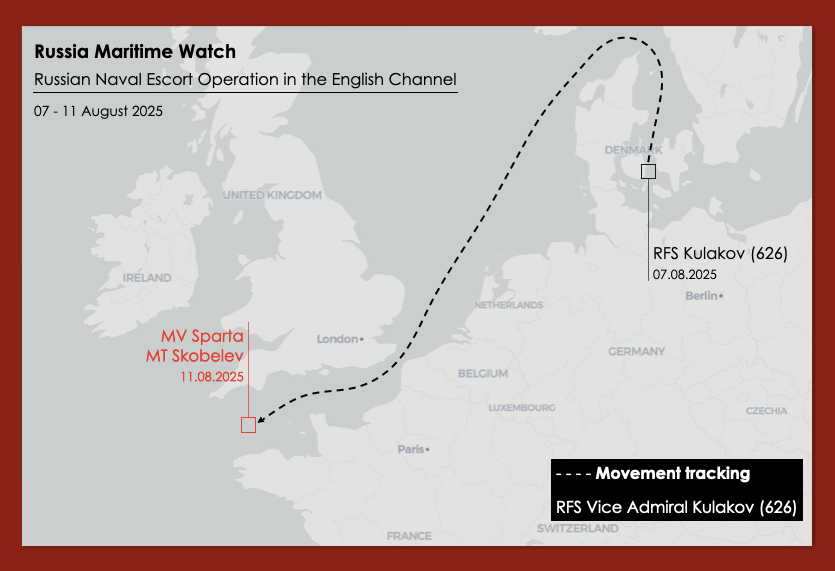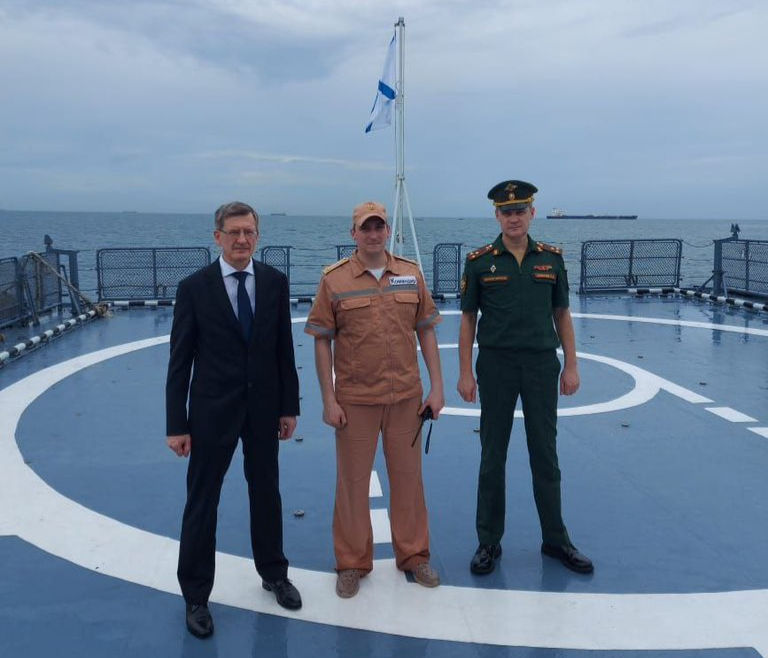Why does the RFN send a Vishnya class, with high SIGINT capabilities in MED?
- RFN- OS
- Apr 24
- 5 min read
Updated: May 27

Since April 14, 2025, the Russian Navy's Vishnya-class AGI Viktor Leonov (CCB 175) has entered the Mediterranean (@key2med).
- From April 16 to 19, 2025, it made a stopover in the port of Algiers.
- From April 19, it continued its navigation along the Spanish coast, before sailing on along the French coast (@TiaFarris10).

The previous visit to the Mediterranean dates back to November 2024. During that period, it made a technical stopover in the port of Algiers, where it refueled before continuing its mission in the Eastern Mediterranean.
As happened in 2024, from April 16 to 19, 2025, the ship stopped in Algiers and also on that occasion it refueled, in addition to the usual protocol visits (@RFNOSBlog).

In recent years and especially after the loss of the Tartus Naval Base, every time the RFN ships stop in Algeria, they show, through posts on X, the ritual photo with the Algerian military authorities. In a reduced form, it also happens when they go to Egypt.
The question I ask myself is:
Why does the RFN send a Vishnya class, with high SIGINT capabilities, instead of the Moma class, at this particular time without a naval base?
Is the deployment of the Victor Leonov (Vishnya class) just a rotation?
Is RFN planning something bigger?
Let’s analyze and evaluate the different hypotheses that could have led the RFN to employ a vessel of this caliber.
The Victor Leonov is a Russian intelligence vessel that frequently operates in international waters and has been sighted in several regions over the years, including the Mediterranean Sea.
The Victor Leonov is equipped with sophisticated signals intelligence (SIGINT) capabilities, designed to intercept and analyze communications, radar signals and other electronic emissions.
Let’s look in detail at its acoustic characteristics that have been of most interest to Russia in recent years.
Key ACINT Capabilities of the Victor Leonov
Underwater Sound Detection:
The Victor Leonov is equipped with highly sensitive hydrophones and sonar systems designed to pick up acoustic emissions from submarines and other naval vessels. This allows the ship to track the movement of submarines, including nuclear-powered and conventional ones, in both deep and shallow waters.
- Surveillance of Critical Infrastructure: The ship is often observed near undersea
communication cables, raising concerns about potential sabotage or intelligence
collection on data networks.
Integration with Other Intelligence Platforms:
ACINT data gathered by the Victor Leonov can be integrated with other forms of intelligence, including signals intelligence (SIGINT) and electronic intelligence (ELINT). This multi-source data fusion allows Russia to get a more complete picture of naval activities, improving their situational awareness and intelligence collection capabilities.
Geopolitical and Military Intelligence:
By operating in areas like the Mediterranean Sea, where NATO forces often conduct exercises and deploy fleets, the Victor Leonov can intercept a variety of maritime communications, detect naval movements, and gather detailed information about Western military activities. This is useful for both tactical purposes (e.g., identifying weaknesses in NATO’s naval posture) and strategic purposes (e.g., understanding the larger patterns of Western military deployment and readiness).
Essentially, the Victor Leonov's ACINT capability isn't limited to its sensors; the ship can also work in coordination with Russian submarines or other assets to track acoustic signatures in more remote or contested areas, such as the deep waters of the Mediterranean.
Note: Given the ship’s importance to Russian naval intelligence, it is not uncommon for the Victor Leonov to be closely monitored by NATO countries as well, as it poses a potential security risk if it is seen as attempting to intercept sensitive naval operations or collect critical data on NATO submarine forces.
Factors to consider
In recent months, the Russian vessel AGOR Yantar has been carrying out monitoring activities in the Mediterranean Sea. During its stay, it has carried out several monitoring operations in areas close to submarine cables.
Given the particular capabilities of the Victor Leonov, is it possible that the use of this vessel is a co-executive or complementary activity to that of the Yantar?
If so, we should note the activity of the Victor Leonov as similar to that of the Yantar.

The photo below shows an article by ItaMilRadar, which indicates the areas of probable monitoring of the Yantar in the month of December 2024. In relation to what has been said, these could be the areas of next patrolling of the Victor Leonov.
The Yantar may have left behind underwater sensors that the Victor Leonov could exploit, information not confirmed by any source but possible.

Post: While we have no official confirmation, we hypothesize that these missions may be linked to the presence of the Russian Navy vessel Yantar in the western Mediterranean. The Yantar is specialized in deep-sea maritime inspections and is known to be used by Moscow for monitoring undersea cables (and, let’s face it, the line between “monitoring” and “sabotage” can be thin) and shehas conducted similar missions in the stretch of sea between the United Kingdom and Ireland.
Below is a map of the submarine cables where Victor Leonov could be present in the coming months.

Factors to consider
Another element to consider is the possible absence of the Krasnodar Kilo-class submarines.
The submarine has been in port in Algiers since April 20, 2025 and we do not know whether it will leave the Mediterranean or not.

What we do know, however, is that the lack of a permanent base makes Russian operations in the Mediterranean much more complicated and much less effective.
Could the use of the Victor Leonov in the Mediterranean fill this lack of an underwater component in the Mediterranean Sea?
Technical features to consider of the Victor Leonov
Given the unavailability of a naval base like Tartus, Leonov has an endurance of about 45 days (7000 nautical miles - 16 knots), which means that it does not require many stops. However, as with previous ships, Victor Leonov could call at Alexandria, Egypt.
Known Periods of Activity in the Mediterranean:
2018:
- According to reports from Russian media (e.g., Sputnik Italia), ships of the Russian Black Sea Fleet, including intelligence vessels like the Viktor Leonov, were active in the Mediterranean as part of Russia’s permanent naval task force in the region.
2021:
- The Viktor Leonov was again reported in the Mediterranean, particularly near the Syrian coast and in proximity to NATO naval assets. It was tracked by NATO forces, including Italian and French navies, as it conducted operations close to undersea communication cables and strategic areas.
2023–2024:
- The ship was intermittently reported in the Mediterranean, often transiting through the Strait of Gibraltar and operating in international waters near NATO countries like Italy, Greece, and Cyprus. Its activities included monitoring NATO naval exercises and gathering intelligence on military infrastructure.
In conclusion, the RFN continues to be present in the Mediterranean trying in every way to demonstrate that it has control of the Mediterranean area, despite the loss of the Naval Base in Syria, and maintain an excellent relationship with partner countries such as Algeria, Egypt and Libya (a country recently coveted by the USA).



Comments